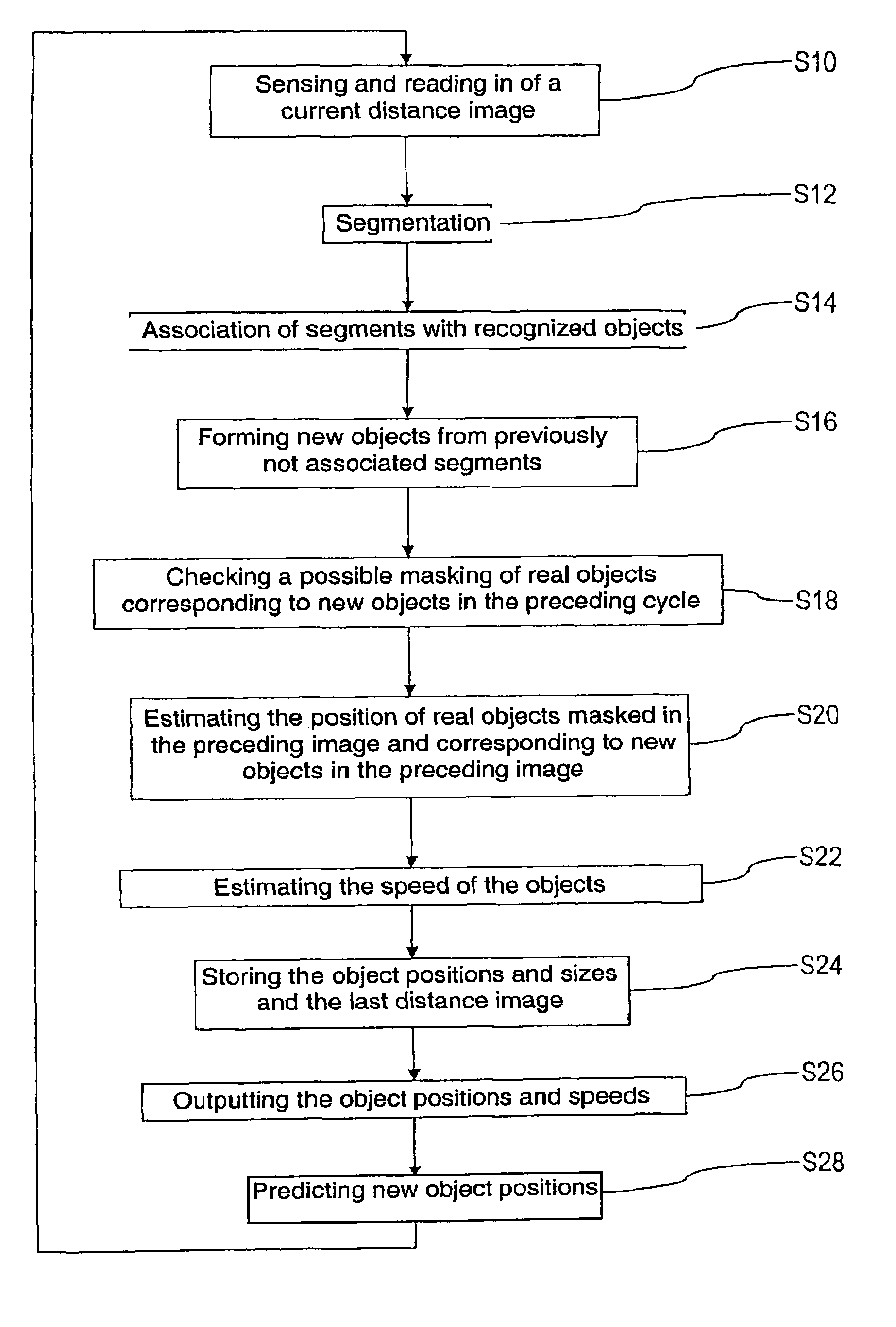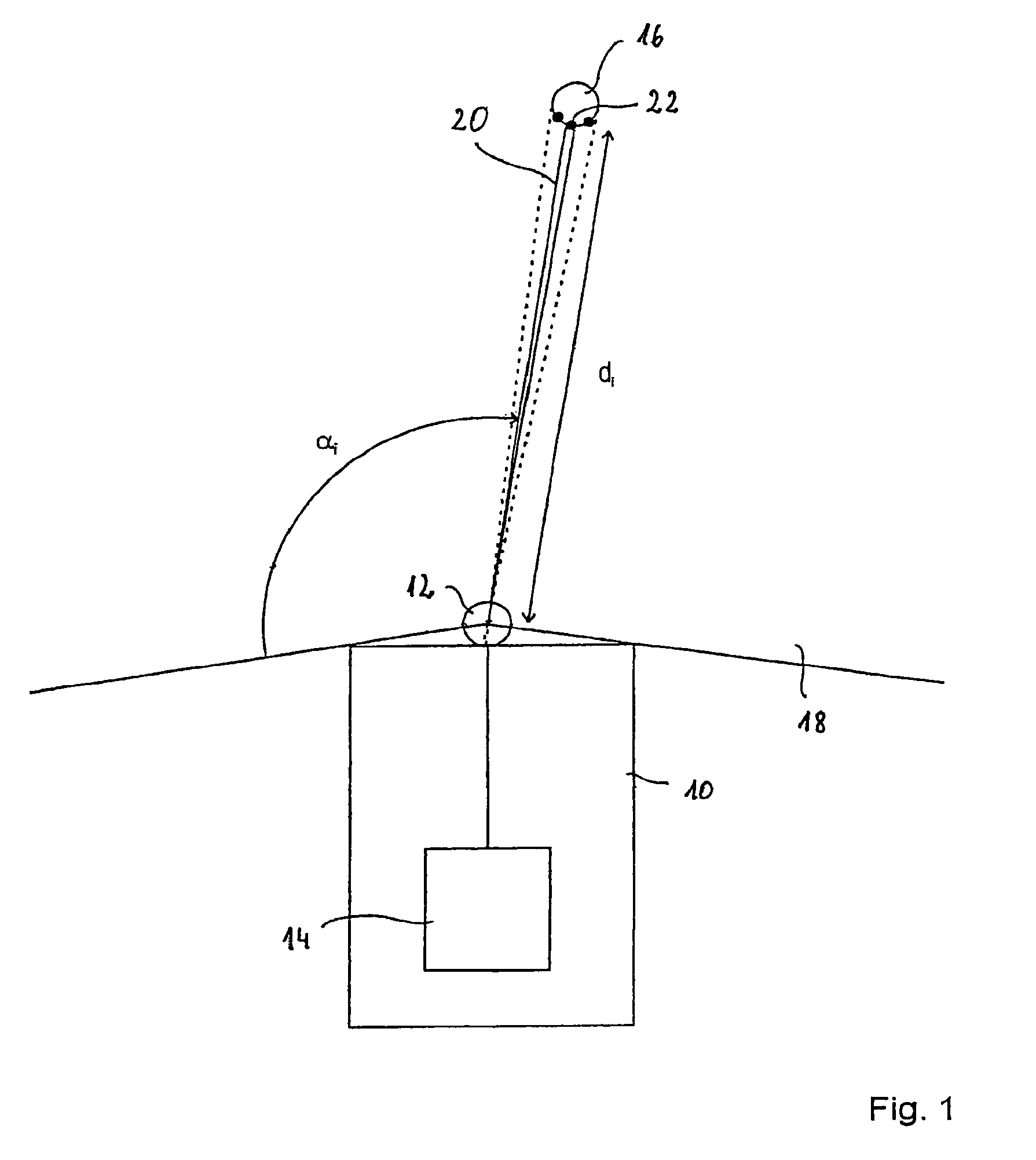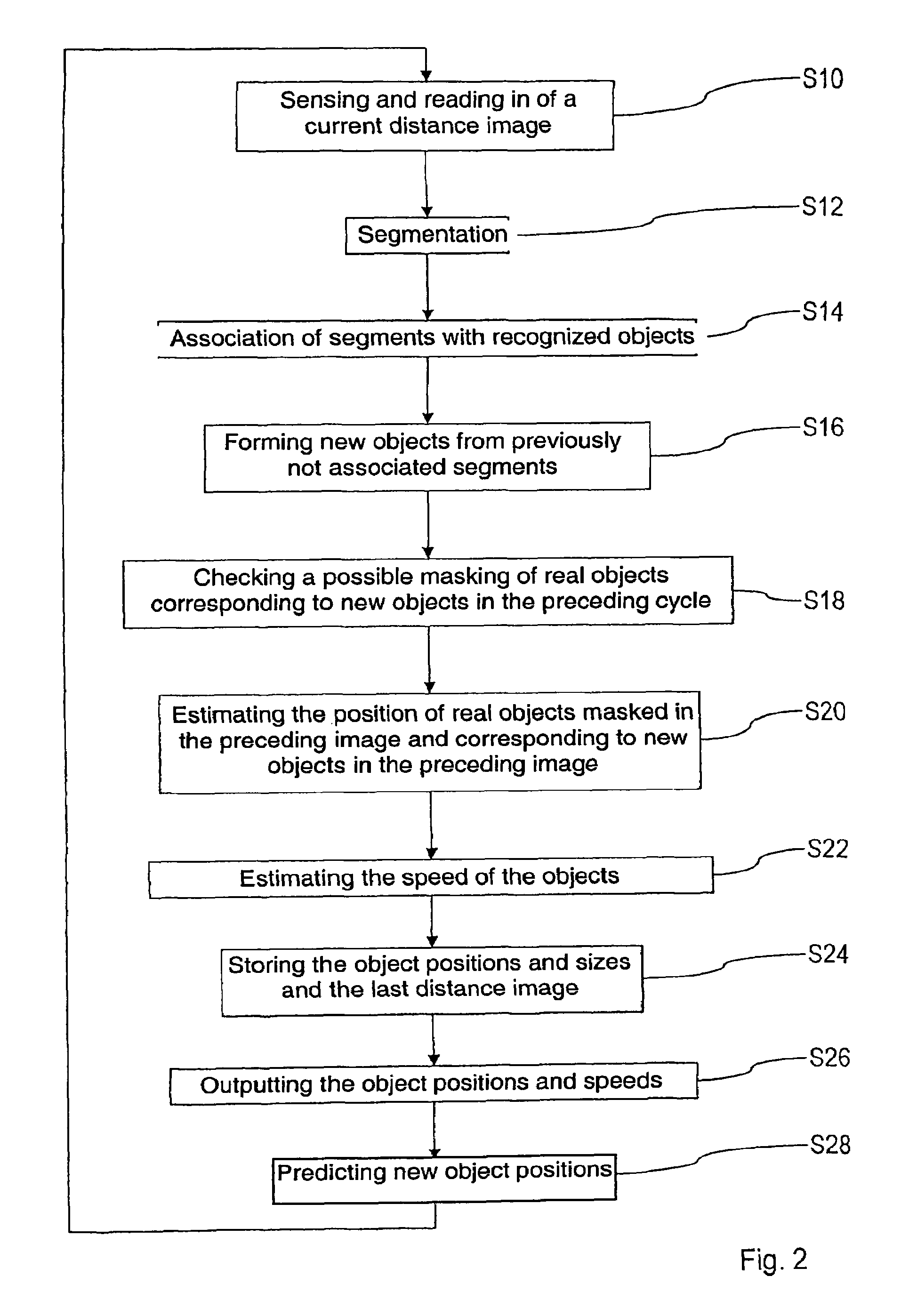Method of recognizing and/or tracking objects
a technology of object recognition and tracking method, applied in the field of object recognition and/or tracking method, can solve problems such as irregularities in particular, and achieve the effect of fast recognition and tracking of objects
- Summary
- Abstract
- Description
- Claims
- Application Information
AI Technical Summary
Benefits of technology
Problems solved by technology
Method used
Image
Examples
first embodiment
[0110]In the method, after the steps S10 to S16 running as in the first embodiment after the formation of new objects from previously non-associated segments in step S16, a search is made in step S30, after checking the criterion whether a new object was found at all in the current distance image, for objects or real objects in the preceding distance image corresponding to the new objects. It is assumed that the new object could not be found in the preceding cycle or distance image since it could not be recognized as an independent object due to the segmentation and objector formation or segment / object association.
[0111]One example for this is illustrated in FIGS. 6A to 6G in which respective sections from successive distance images are shown. The laser scanner 12 is in turn arranged at the origin (0,0) of the coordinate system in the distance images which corresponds to the Cartesian coordinate system of the preceding embodiment.
[0112]In the distance images, a pedestrian 26 is init...
third embodiment
[0152]In a method of recognizing and tracking objects in accordance with a fourth preferred embodiment of the invention, the same apparatus for the recognition and tracking of objects as in the third embodiment is substantially used, with the programming of the data processing device 14′, however, likewise being changed in accordance with the changed method. This also means that the means for the association of parts of an earlier image and / or for the determination of at least one indication with respect to an earlier state of the object or of a real object corresponding to it being modified on the basis of a corresponding earlier image and association of the indication with the part of the current image or with the current object.
[0153]In this method illustrated schematically in FIGS. 12A and B, distance picture elements in successively sensed distance images are tracked in corresponding regions in video images substantially synchronously sensed with the distance images using the o...
fourth embodiment
[0169]In other variants of the method in accordance with the fourth embodiment, the projection can take place in another manner; examples for this are described in further embodiments in the patent application references which are herewith explicitly included in the description by reference.
[0170]A clearer association of distance picture elements is achieved by the different treatment of distance picture elements which correspond to real objects not moving away from the laser scanner 12. For in the current cycle, respectively more distance picture elements will correspond to such real objects than in the preceding cycle due to the imaging geometry of the laser scanner 12 which scans its sensing zone 18 radially. An association of a plurality of distance picture elements of the current cycle with, for example, a pre-determined distance picture element of the preceding cycle can then be avoided in which the case can occur for objects approaching the laser scanner that a plurality of d...
PUM
 Login to View More
Login to View More Abstract
Description
Claims
Application Information
 Login to View More
Login to View More - R&D
- Intellectual Property
- Life Sciences
- Materials
- Tech Scout
- Unparalleled Data Quality
- Higher Quality Content
- 60% Fewer Hallucinations
Browse by: Latest US Patents, China's latest patents, Technical Efficacy Thesaurus, Application Domain, Technology Topic, Popular Technical Reports.
© 2025 PatSnap. All rights reserved.Legal|Privacy policy|Modern Slavery Act Transparency Statement|Sitemap|About US| Contact US: help@patsnap.com



